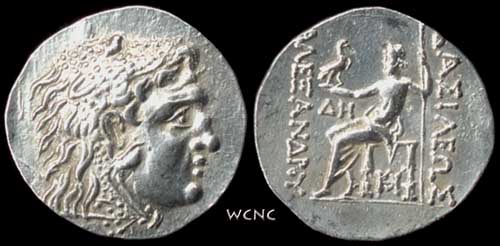
In the mid-4th century B.C., the Greek city-states were brought under the rule of Macedonia, whose influence eventually spread to the rest of the Mediterranean world. The tetradrachmas and staters of two Macedonian kings––Philip II and his famous son, Alexander III (the Great)––became the top international money of its time. The coins of Philip and Alexander were so popular that they were copied and counterfeited for centuries. Philip worked to stabilize his Macedonian coinage system at a ratio of ten-to-one for gold and silver, a standard that set the exchange rate between gold and silver for many years. Alexander the Great was a military genius and more. He also standardized the money system for Macedonia and most of the countries from the Indus River to Naples. The stimulus to trade was extraordinary. Alexander kept the gold coins of his father but issued many more of them with the backing of captured Persian metal. He redesigned them, however, to reflect his unique preferences. The front of Alexander's silver tetradrachma bears the head of the young Hercules (some suggest it is a portrait of Alexander), while the back bears the image of Zeus holding a scepter and an eagle. The scepter has long been a symbol of the ruler, while the early Greeks believed that the soul of a dead king took the form of an eagle to watch over his kingdom. Others regard the eagle as Zeus in animal form.
Continue